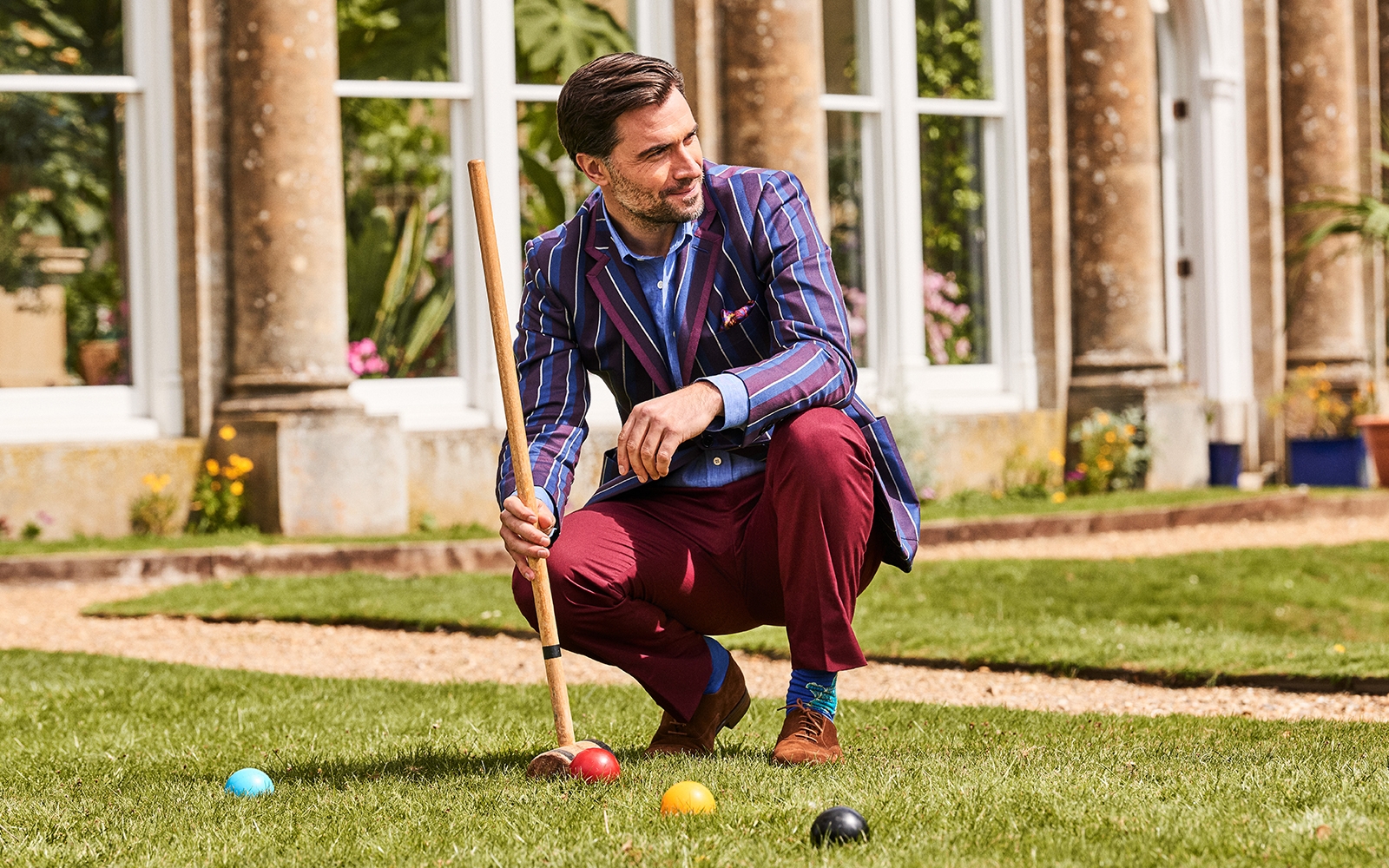Before H&M launched their new campaign of loungewear with Hector Bellerin, I confess I hadn’t heard of him. I am not aware of how many goals he has kicked or on behalf of whom. What I had noticed was the fact that the collection was what is more colloquially known as the tracksuit, but fairly passive aggressively referred to as ‘loungewear’ in the industry – a double-edged term suggests that no one should be seen in public wearing it.
What is striking about this collaboration is that it is twelve months too late. Though I am sure Señor Bellerin’s vocational cash cow means that he will not live or die on the success of this particular collection, there is still no objective rationale for it.
The tracksuit, fairly passive aggressively referred to as ‘loungewear’ in the industry – a double-edged term that suggests no one should be seen in public wearing it
With life returning slowly to normal, now is the time to smarten up, not dress down. The reason why there are unexpected rings of optimism coming from the classic menswear arena is that a lot of people are saying that once released from our forced domestication, we will be looking to dress up more and shed the casual clothing to which we have become so accustomed. Far from being burdensome, dressing up will feel like a quasi-exotic pleasure.
What we wear may well take a turn towards the traditional. After the 2008 financial crash, ‘considered purchasing’ was the buzzwords that floated amongst marketing teams and sales spiel but proved to be perfectly apt. People were looking for fewer clothes but each item had to help the buyer look like their most essential self, and was something they knew would last a long time and deceive the vagaries of fashion and still be relevant during its lifespan.
The joy of working with heritage brands, tailors and the like, is that they offer one-off purchases built to last – an appealing factor for the post Covid dresser who’s had months to work out what they do not need from their wardrobe. Certainly, the clothes will all be made in Britain by hand, by a skilled workforce (a bespoke suit can have up to nine people working on it). All of the mills who create the fabrics you can choose at the tailors, from Fox Brothers, to Vitale Barberis Canonico and Loro Piana are able to tell the story that traces the fabric from sheep to suit.
Shoe makers aren’t dissimilar but it’s a much more isolated profession, where a hunched artisan buries himself in creating the most practical expression of art in the world, challenging the false economy of cheap footwear. Crockett & Jones will be seen on James bond’s feet – whenever the film actually comes out – but their business doing white-label shoemaking is enormous, so you may be wearing shoes made by them but not even know it. Edward Green and Gaziano & Girling are at the top end of the market, but have created beautiful looking shoes at more affordable prices because they know the demand will be there. Staying on trend matters less in the current climate than buying something that is elegant and enduring.

The emergence of flexible working should also train our eye on traditional menswear and tailoring. Outfitters like New & Lingwood are constantly putting collections together that will tend to both business and leisure. The customer still gets the satisfaction of wearing something with a traditional label and the quality guarantees that come with that. Young sartorial brands such as Anglo-Italian in Marylebone, P Johnson near Soho and The Deck on Savile Row (just for women) spotted the gap in the market for tailoring that was much more about sexiness than stuffiness, and are also a terrific place to look if you want to reinvigorate your dress in 2021. When we’re finally let out, we’ll want to look like we mean it.
As we emerge from our isolation, classic menswear offers a failsafe timelessness that will see us safely through our reintroduction to society, and beyond. Its determination to be as irrelevant to the catwalk as possible may be its saving grace.







Comments